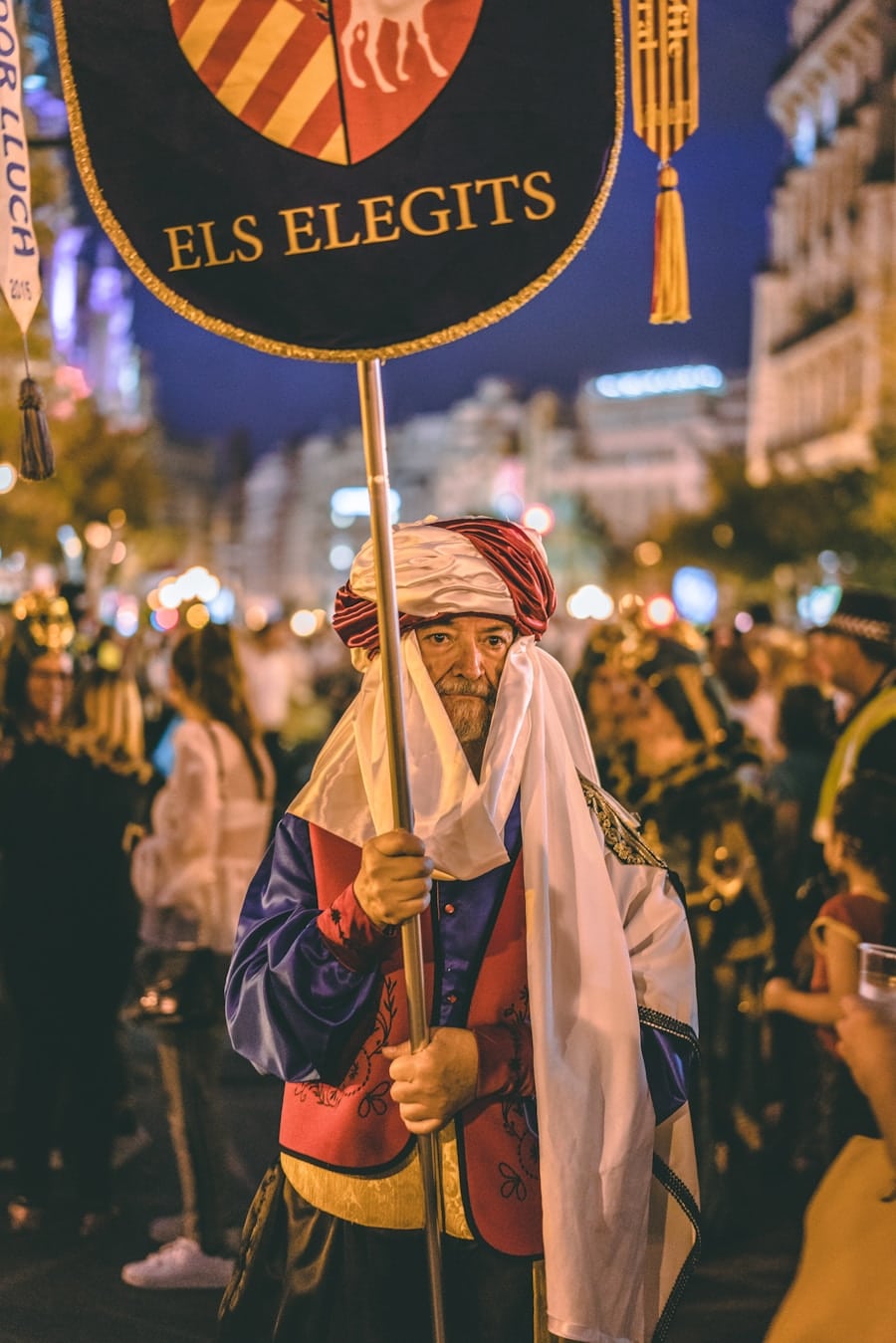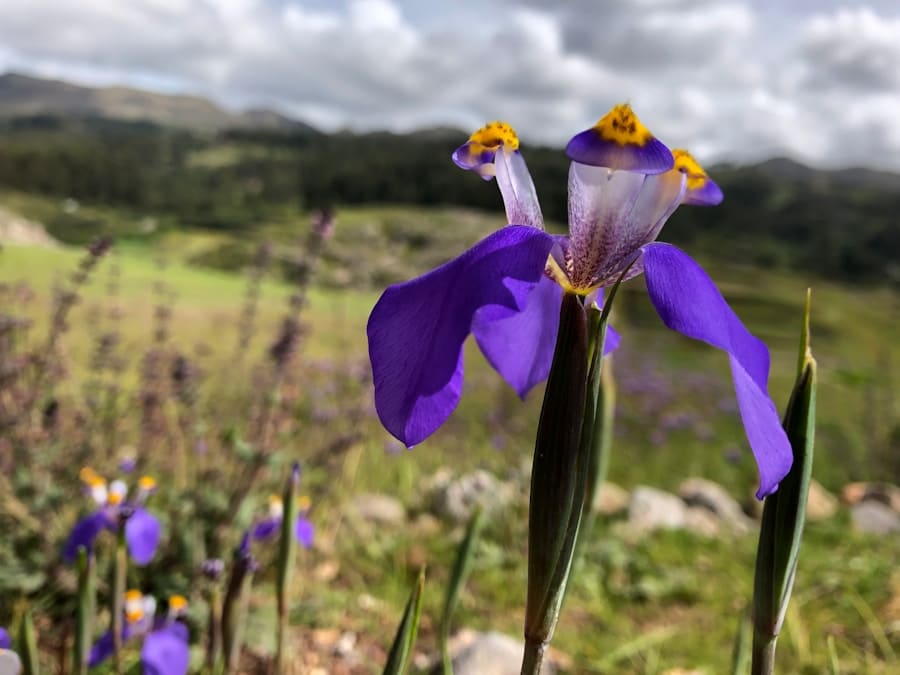There is something undeniably enchanting about purple and blue flowers that captivates the heart and stirs the soul. As I stroll through gardens or meander along nature trails, I often find myself drawn to these vibrant hues. The deep, rich tones of purple evoke a sense of mystery and elegance, while the calming shades of blue bring a serene tranquility to any landscape.
Together, they create a visual symphony that can transform an ordinary space into a breathtaking oasis. Whether it’s the delicate petals of a lavender bloom or the striking presence of a bluebell, these flowers have a unique ability to evoke emotions and inspire creativity. The allure of purple and blue flowers extends beyond their aesthetic appeal.
They often serve as a reminder of the beauty found in nature, encouraging us to pause and appreciate the world around us. I find that these colors can uplift my spirits, providing a sense of peace and contentment. In moments of stress or uncertainty, I often seek solace in gardens filled with these blooms, allowing their beauty to wash over me like a gentle wave.
The combination of purple and blue flowers can create a harmonious atmosphere, inviting reflection and introspection while simultaneously sparking joy and wonder. Visit Our Site for more information about our products.
Key Takeaways
- Purple and blue flowers are popular for their captivating and soothing colors, adding a sense of tranquility and elegance to any garden or floral arrangement.
- Purple and blue flowers are often associated with symbolism such as spirituality, mystery, and creativity, making them a meaningful choice for special occasions and gifts.
- Popular varieties of purple and blue flowers include lavender, hydrangeas, irises, and violets, each with their own unique characteristics and growing requirements.
- Incorporating purple and blue flowers into your garden can be done through careful planning, considering factors such as sunlight, soil type, and complementary plant pairings.
- Caring for purple and blue flowers involves regular watering, proper pruning, and protection from pests and diseases to ensure healthy and vibrant blooms.
- Purple and blue flowers play a significant role in floral arrangements, adding depth, contrast, and a touch of sophistication to any bouquet or centerpiece.
- Purple and blue flowers have been celebrated in art and culture for centuries, symbolizing royalty, spirituality, and creativity in various forms of expression.
- Purple and blue flowers can be found and enjoyed in nature, from wildflower fields and botanical gardens to hiking trails and scenic landscapes around the world.
The Symbolism of Purple and Blue Flowers
The symbolism associated with purple and blue flowers is as rich and varied as their colors. Purple has long been linked to royalty, luxury, and ambition.
When I see purple flowers, I am reminded of their historical significance, often associated with spirituality and enlightenment. They can symbolize creativity and inspiration, encouraging us to embrace our artistic sides and pursue our passions. On the other hand, blue flowers are often seen as symbols of tranquility, peace, and trust.
They evoke feelings of calmness and serenity, reminding me of clear skies and tranquil waters. Blue flowers can represent loyalty and fidelity, making them a thoughtful choice for romantic gestures or commemorative occasions. Together, the symbolism of purple and blue flowers creates a beautiful narrative that speaks to both the heart and mind.
They remind us of the balance between ambition and peace, encouraging us to strive for our dreams while remaining grounded in our values.
Popular Varieties of Purple and Blue Flowers

As I delve into the world of purple and blue flowers, I am continually amazed by the variety available. One of my favorites is the lavender plant, with its soothing fragrance and stunning purple spikes. Lavender not only adds beauty to any garden but also attracts pollinators like bees and butterflies, enhancing the ecosystem around it.
Another popular choice is the iris, which boasts striking blue and purple hues in its intricate petals. The iris has a rich history in art and literature, often symbolizing hope and wisdom. Delphiniums are another captivating option that never fails to impress me with their tall spikes adorned with vibrant blue flowers.
They add height and drama to any garden arrangement, creating a stunning focal point. Additionally, I find myself enchanted by the delicate beauty of forget-me-nots, which bloom in soft shades of blue. Their name alone evokes a sense of nostalgia and remembrance, making them a poignant addition to any floral display.
How to Incorporate Purple and Blue Flowers into Your Garden
| Flower Type | Best Growing Conditions | Blooming Season |
|---|---|---|
| Lavender | Full sun, well-drained soil | Spring to early summer |
| Iris | Partial shade, moist soil | Spring to early summer |
| Hydrangea | Partial shade, rich soil | Summer to early fall |
| Lupine | Full sun, well-drained soil | Late spring to early summer |
Incorporating purple and blue flowers into my garden is an exciting endeavor that allows me to express my creativity while enhancing the overall aesthetic. One approach I enjoy is creating color-themed garden beds that focus solely on these hues. By grouping together various shades of purple and blue flowers, I can create a visually striking display that draws the eye and invites exploration.
I often mix taller varieties like delphiniums with shorter blooms like pansies or lobelias to create depth and dimension in my garden. Another technique I find effective is using purple and blue flowers as accents within a more diverse garden palette. By strategically placing these blooms among other colors, I can create contrast that highlights their beauty even further.
For instance, pairing bright yellow sunflowers with deep purple asters creates a vibrant juxtaposition that energizes the space. Additionally, I love using containers filled with purple and blue flowers on patios or balconies to bring color to smaller spaces. This versatility allows me to enjoy these stunning blooms no matter the size of my garden.
Tips for Caring for Purple and Blue Flowers
Caring for purple and blue flowers requires attention to detail and an understanding of their specific needs. One essential tip I’ve learned is to ensure proper soil drainage. Many of these flowers thrive in well-draining soil that prevents water from pooling around their roots.
I often mix organic matter into my garden beds to improve soil structure and promote healthy growth. Additionally, regular watering is crucial, especially during dry spells; however, I make sure not to overwater, as this can lead to root rot. Fertilization is another important aspect of caring for these vibrant blooms.
I typically use a balanced fertilizer during the growing season to provide essential nutrients that support blooming. Deadheading spent flowers is also a practice I embrace; it encourages new growth and prolongs the blooming period. Lastly, I pay close attention to pests that may target my beloved flowers.
Regular inspections allow me to catch any issues early on, ensuring my garden remains healthy and thriving.
The Role of Purple and Blue Flowers in Floral Arrangements

When it comes to floral arrangements, purple and blue flowers play an integral role in creating stunning displays that capture attention and evoke emotion. Their unique colors can serve as focal points or complementary elements within a bouquet. I often find that incorporating these hues adds depth and richness to arrangements, making them visually appealing while also conveying specific sentiments.
For instance, a bouquet featuring deep purple calla lilies paired with soft blue hydrangeas creates a striking contrast that speaks volumes. In addition to their visual impact, purple and blue flowers can also influence the overall mood of an arrangement. The calming nature of blue flowers can evoke feelings of tranquility, making them ideal for sympathy arrangements or peaceful settings.
Conversely, the boldness of purple blooms can convey passion or celebration, making them perfect for weddings or festive occasions. By thoughtfully selecting combinations of these colors, I can create arrangements that resonate with the intended message while showcasing the beauty of nature.
Purple and Blue Flowers in Art and Culture
Throughout history, purple and blue flowers have held significant meaning in art and culture. Artists have long been inspired by their beauty, using them as subjects in paintings, poetry, and literature. For instance, Vincent van Gogh’s iconic painting “Irises” captures the essence of these blooms with vibrant strokes that convey both movement and emotion.
Similarly, many poets have used purple and blue flowers as metaphors for love, longing, or remembrance in their works. Culturally, these colors have also been associated with various traditions and beliefs. In some cultures, purple flowers symbolize spirituality or connection to the divine, while blue flowers may represent fidelity or loyalty in relationships.
As I explore different cultures’ interpretations of these blooms, I am reminded of their universal appeal—how they transcend borders and speak to our shared human experience.
Where to Find and Enjoy Purple and Blue Flowers in Nature
Finding purple and blue flowers in nature is one of my favorite pastimes; it allows me to connect with the environment while appreciating its beauty firsthand. Many local parks and botanical gardens feature dedicated sections showcasing these vibrant blooms throughout the growing season. Visiting these spaces not only provides an opportunity to see various species up close but also allows me to learn about their unique characteristics from knowledgeable staff.
Additionally, hiking trails often reveal hidden gems where wildflowers bloom in abundance during springtime. I love exploring these trails with friends or family members; it becomes an adventure as we search for patches of purple violets or clusters of bluebells nestled among lush greenery. Nature reserves are also excellent places to discover native species that may not be found in cultivated gardens.
By immersing myself in these natural settings, I can fully appreciate the allure of purple and blue flowers while fostering a deeper connection with the world around me. In conclusion, the allure of purple and blue flowers extends far beyond their visual appeal; they embody rich symbolism, offer diverse varieties for gardening enthusiasts, play vital roles in floral arrangements, inspire artists across cultures, and provide opportunities for exploration in nature. As I continue my journey through gardens filled with these enchanting blooms, I am reminded of their power to uplift spirits, inspire creativity, and connect us all through shared experiences in beauty.
If you are looking to add some purple and blue flowers to your garden, you may want to check out this article on how to elevate your spring garden with a new selection of flowering bulbs. These bulbs can add a pop of color to your outdoor space and create a beautiful and vibrant display. You can find more information on planting and caring for these bulbs here.
FAQs
What are some examples of purple and blue flowers?
Some examples of purple and blue flowers include lavender, delphinium, iris, hydrangea, and bluebell.
What is the significance of purple and blue flowers?
Purple and blue flowers are often associated with feelings of calmness, serenity, and relaxation. They are also often used to symbolize royalty, elegance, and mystery.
How do purple and blue flowers differ in terms of care and maintenance?
Purple and blue flowers may have different care and maintenance requirements depending on the specific type of flower. However, in general, they may require similar conditions such as well-drained soil, adequate sunlight, and regular watering.
Can purple and blue flowers be used for special occasions?
Yes, purple and blue flowers can be used for special occasions such as weddings, birthdays, and anniversaries. They can add a unique and elegant touch to floral arrangements and bouquets.
Are there any cultural or historical significances associated with purple and blue flowers?
In some cultures, purple and blue flowers are associated with spirituality, wisdom, and healing. They have also been used in traditional medicine and rituals in various parts of the world.

